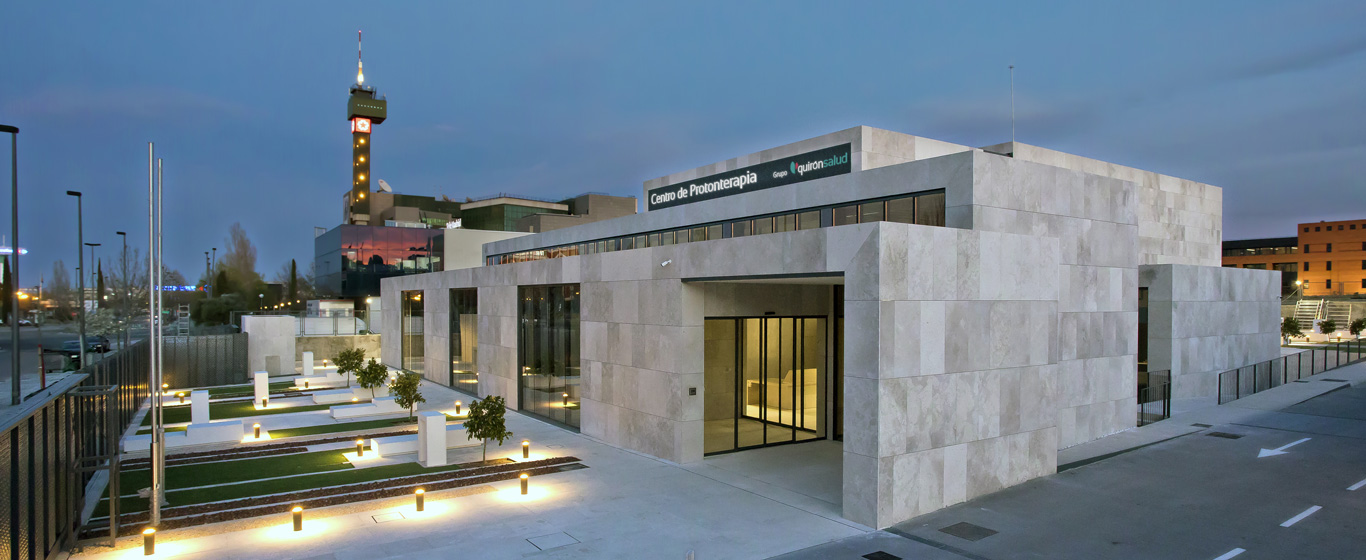Magnetic Resonance Guided Linear Accelerator (RMN LINAC)
The magnetic resonance-guided linear accelerator is known by the acronym RMN LINAC. It is one of the technologies used to administer adaptive radiotherapy, where doses are adjusted during each session based on the tumor's and the body’s condition, which is verified through real-time images.
The magnetic resonance-guided linear accelerator (RMN LINAC) is a type of adaptive radiotherapy that relies on the images obtained to adjust the radiation dose in real time. The use of this technology allows for more precise treatment, yielding better results, especially in soft tissues.
The main difference between RMN LINAC and conventional radiotherapy is that it uses a 1.5 Tesla magnetic resonance machine to obtain a more accurate diagnosis before, during, and after radiation. Depending on the status of the tumor and the surrounding healthy cells, the dose is either increased or decreased. Furthermore, the orientation of the radiation can be adjusted if the tumor is found to have shifted position.
How does it work?
RMN LINAC works by obtaining images while applying radiotherapy to adjust treatment in real time. A non-conventional magnetic resonance device is used, specially designed to function while emitting therapeutic radiation. The radiotherapy is generated from a ring-shaped device attached to the magnetic resonance machine.
Thus, two processes are combined:
Magnetic resonance: provides high-resolution images of the tumor and the surrounding organs and healthy tissues.
Linear accelerator: emits ionizing radiation directed at the cancerous cells to slow their growth and induce necrosis.
To avoid image distortion caused by the radiation effect, the magnetic field is divided into two so that the ion beams pass through the space left in the middle.
What are the benefits of RMN LINAC?
The most notable advantages of using a magnetic resonance-guided linear accelerator include:
- High resolution and excellent image quality.
- Real-time images that allow detection of tumor displacement caused by internal body movements.
- Dose adjustment based on the needs of each session (adaptive radiotherapy).
- Protection of healthy tissues, as it is easier to direct radiation to the exact location of the tumor.
- Fewer sessions.
- Greater effectiveness.
When is it indicated?
RMN LINAC is especially indicated for addressing tumors in hard-to-reach areas or surrounded by vital organs, as it significantly reduces the risk of damaging them. This technology is highly effective in treating:
- Brain tumors.
- Pancreatic cancer.
- Bladder cancer.
- Rectal cancer.
- Prostate cancer.
- Metastases in the liver, brain, or lungs.
What to expect from RMN LINAC
The procedure for the patient is similar to other types of radiotherapy. After undergoing magnetic resonance or computed tomography to determine the action plan, radiation sessions begin.
Radiotherapy is an outpatient procedure, and patients can resume their routine without the need for rest or hospitalization. Although the time may vary depending on the tumor characteristics and individual circumstances, each session typically lasts between 45 and 60 minutes. This process is not painful.
To enter the radiotherapy room, the patient must sign an informed consent form and wear the gown or pajamas provided at the medical center. Additionally, makeup and metallic objects should be avoided.
The patient lies on the table in the most suitable position for the treatment. In some cases, contrast material may be injected to obtain images. After placing earplugs to reduce the noise generated by the magnetic resonance machine, the table is introduced into the machine. The patient remains alone in the room but is under continuous supervision and can communicate with the specialists via a microphone. It is important to remain as still as possible until the session is complete.
Specialties in which it is used
The magnetic resonance-guided linear accelerator is used in the specialty of radiotherapy oncology.




